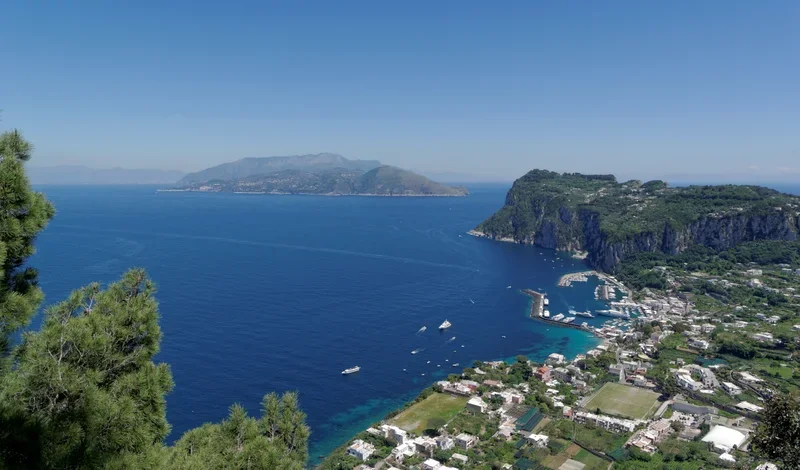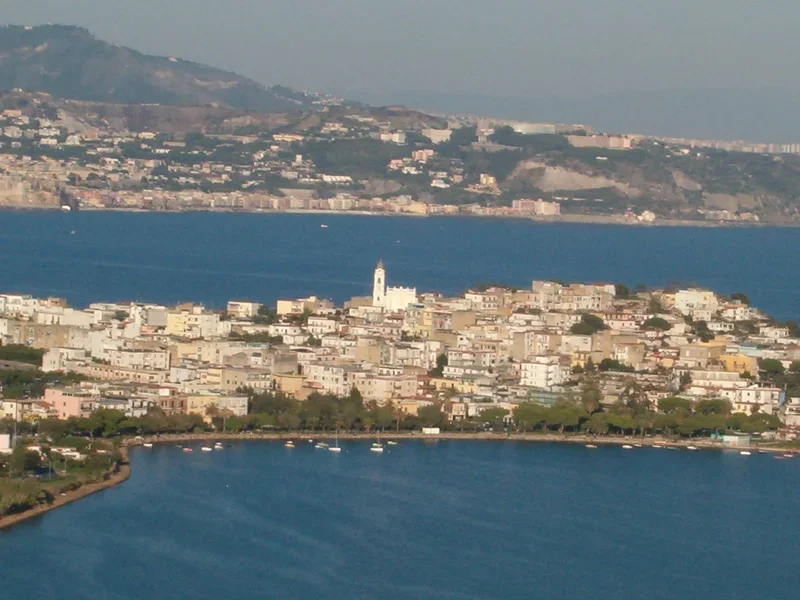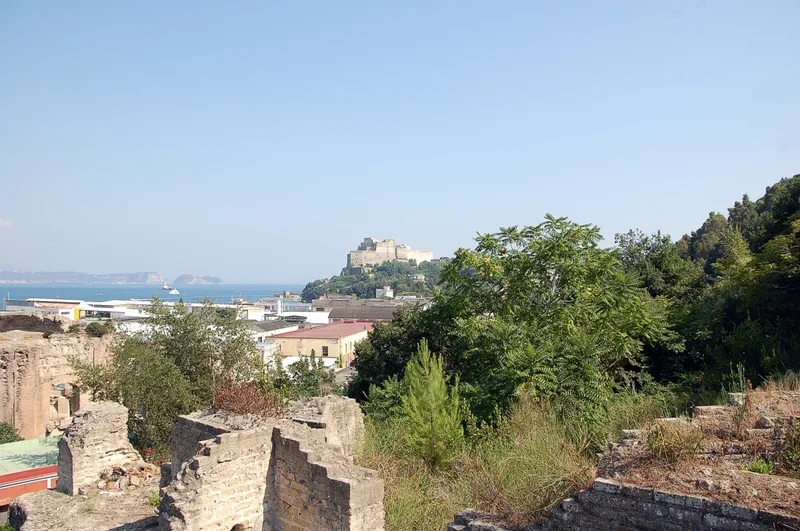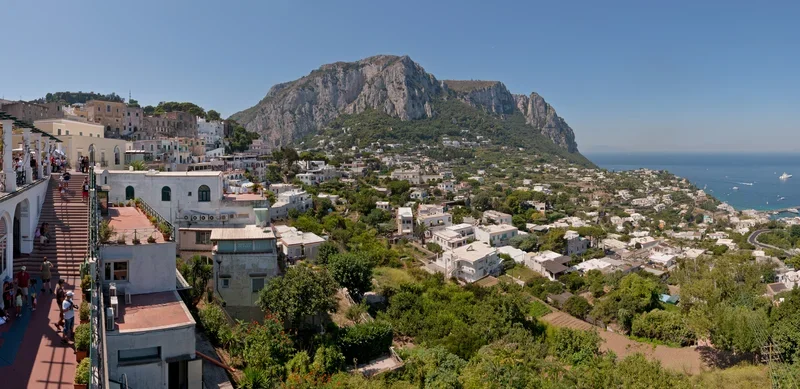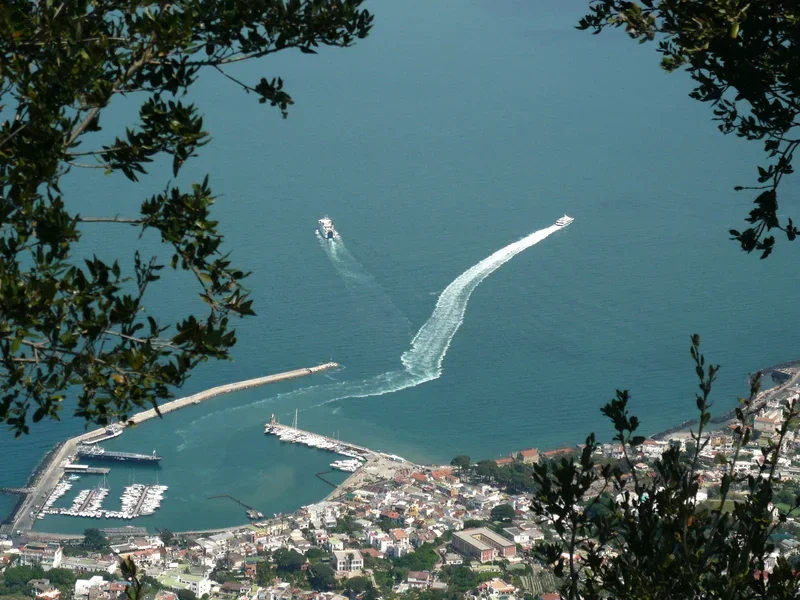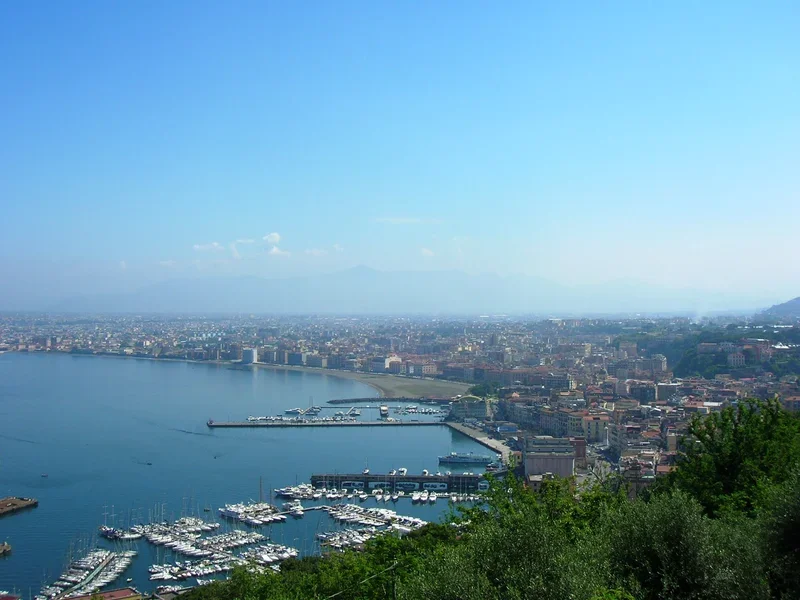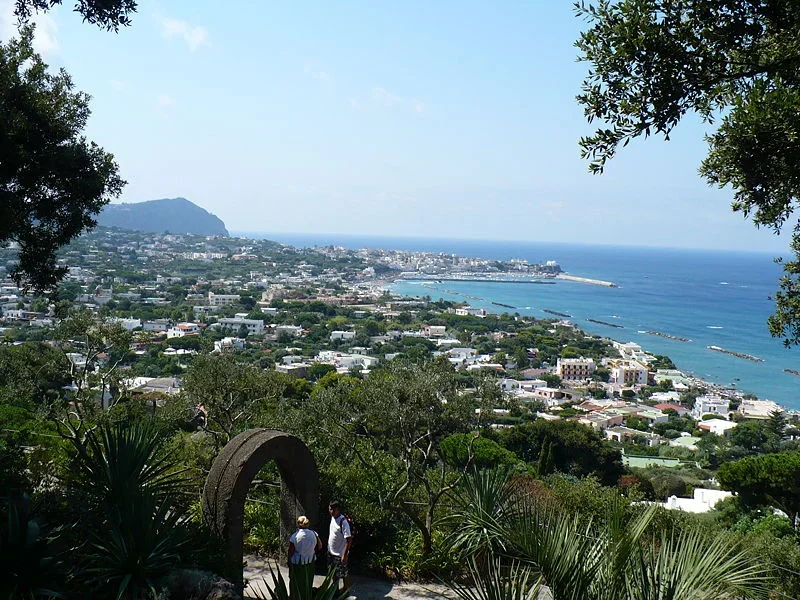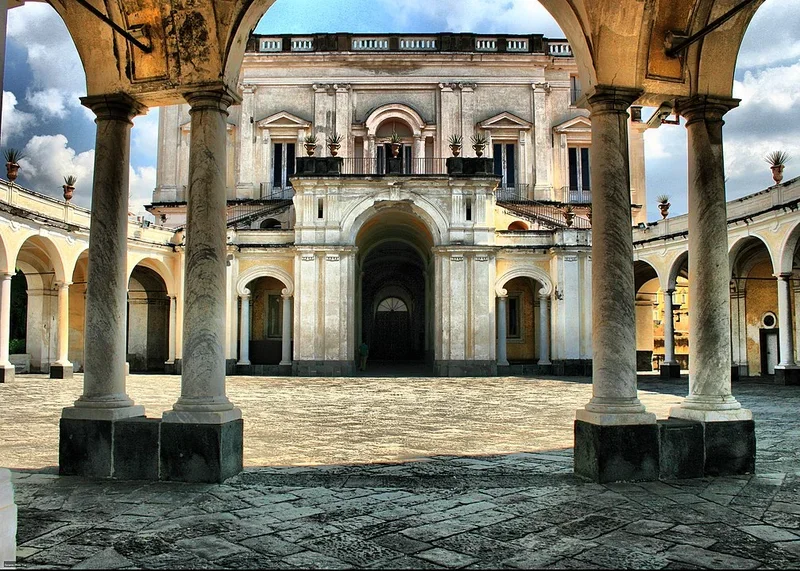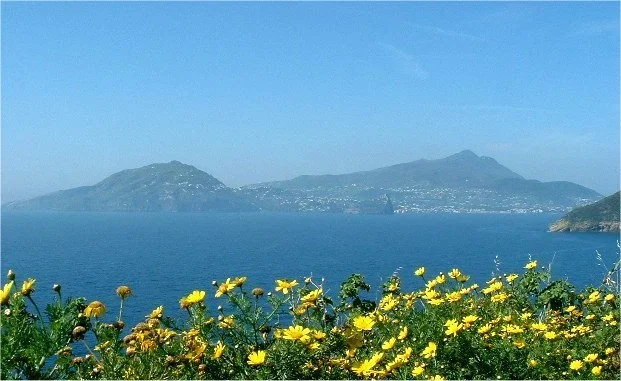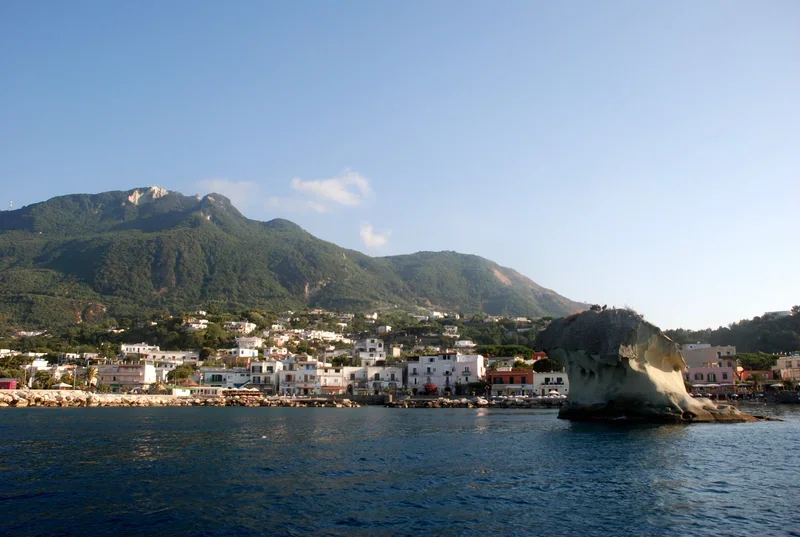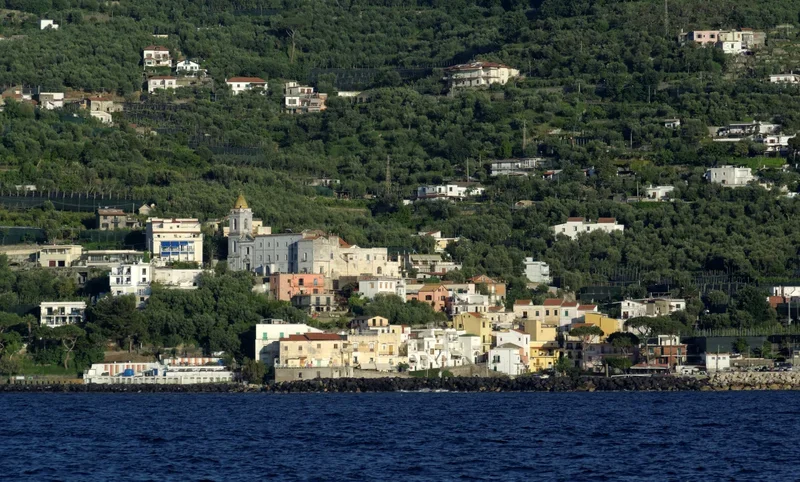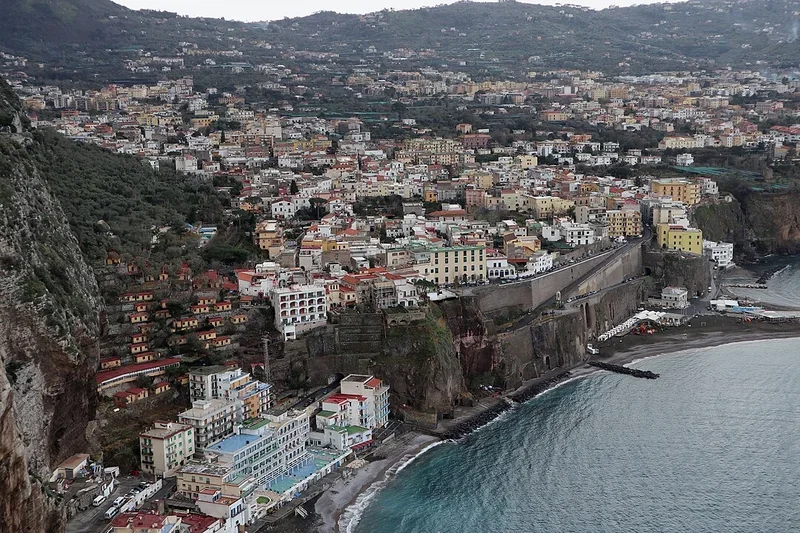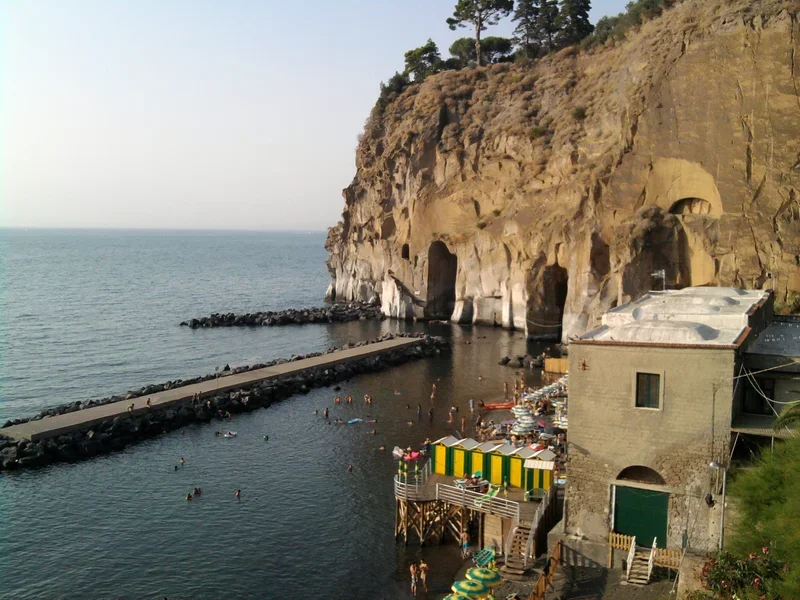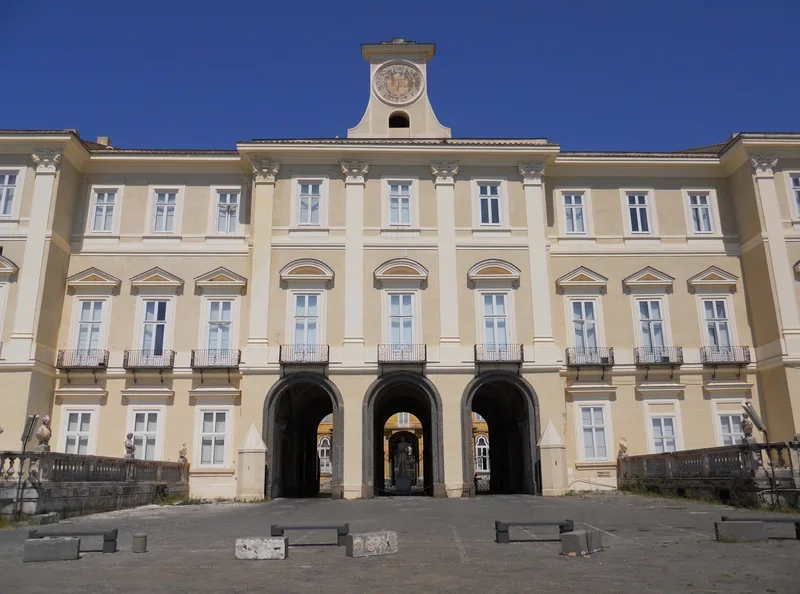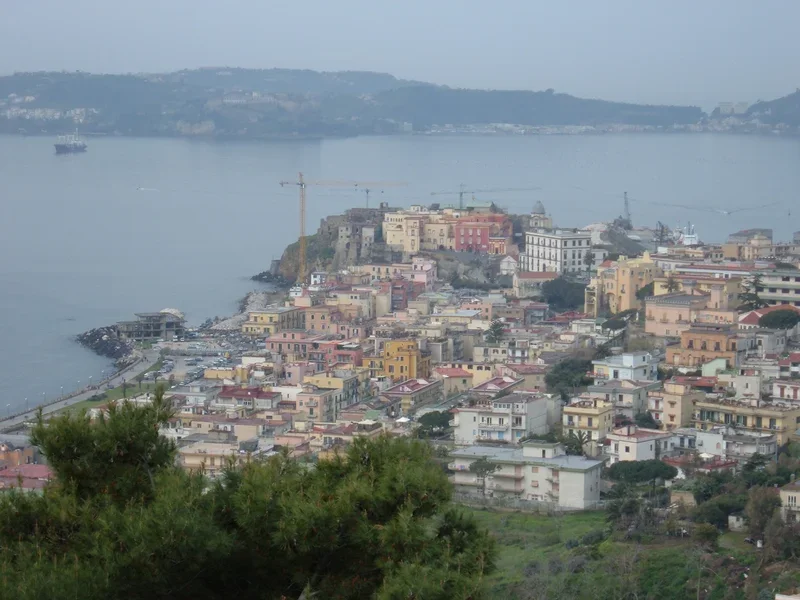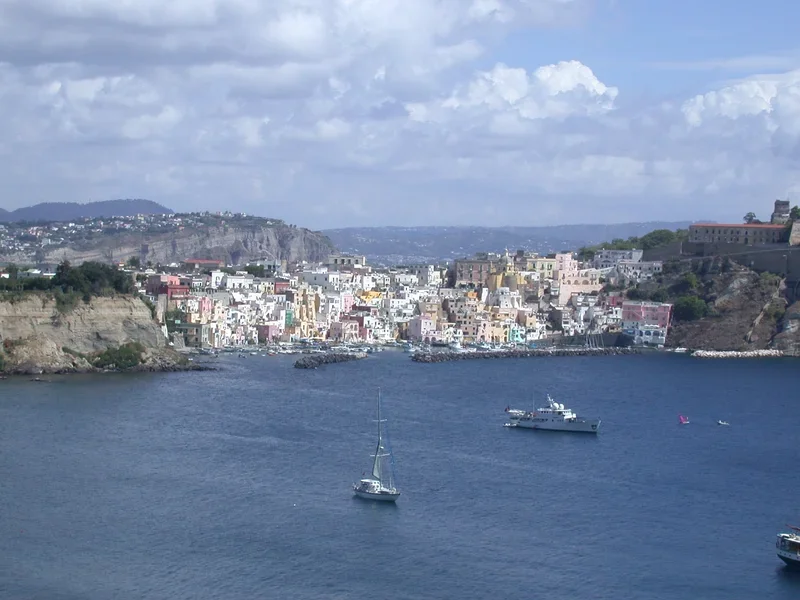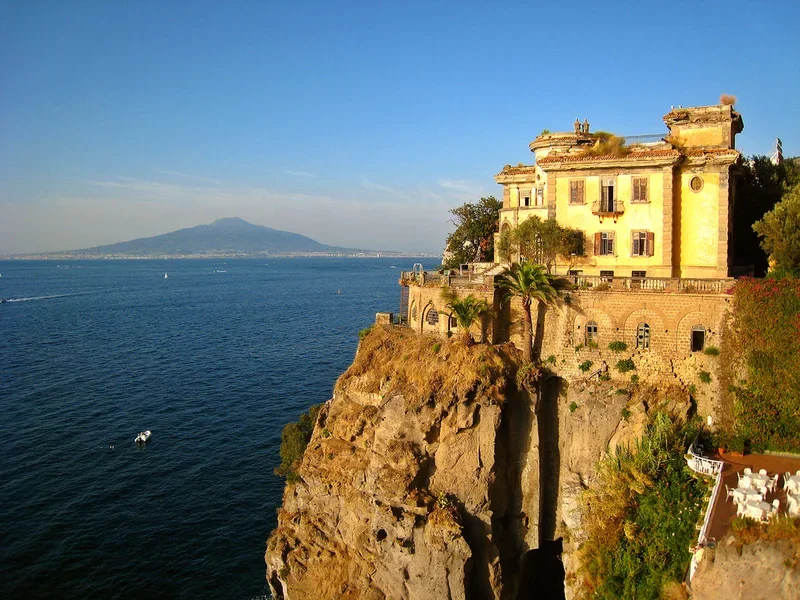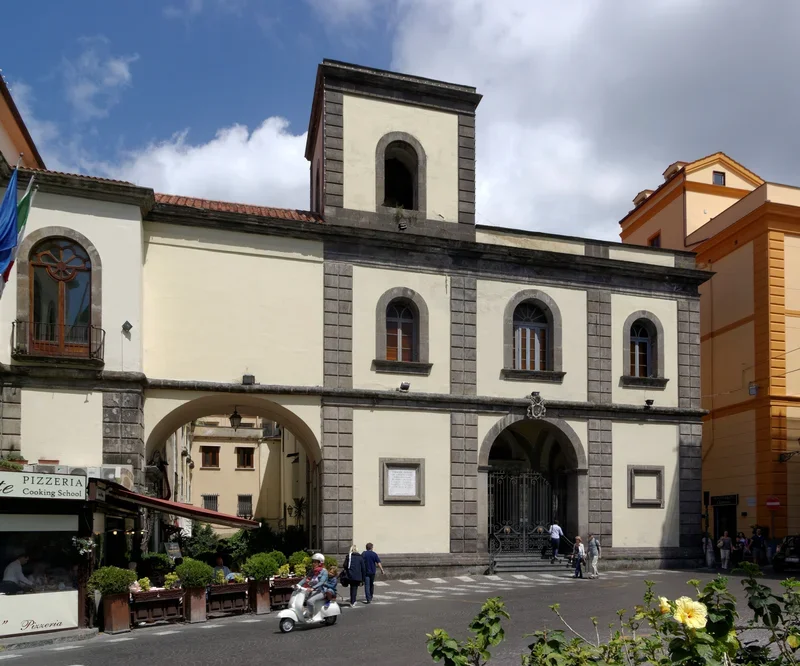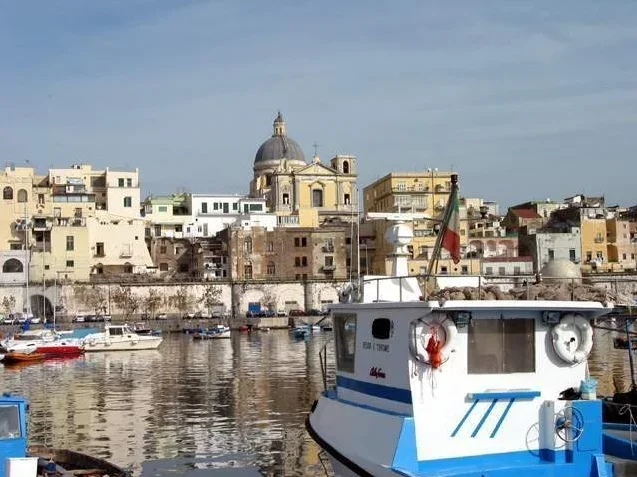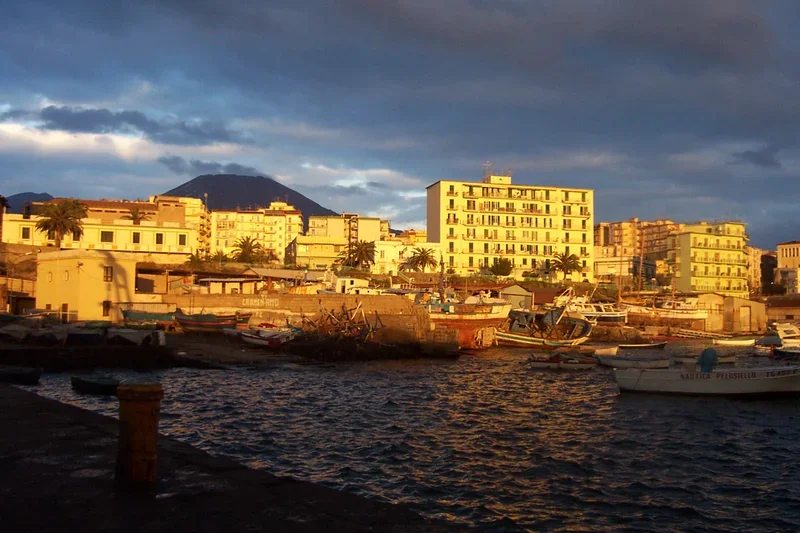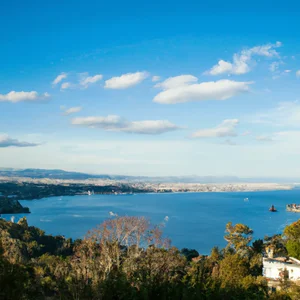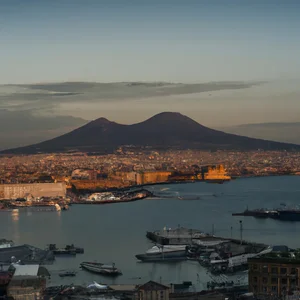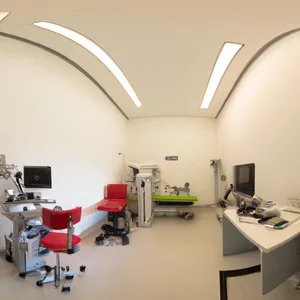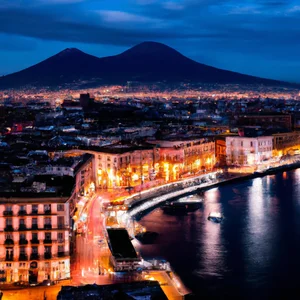Book your experience
Port of Naples
The Port of Naples represents not only an important maritime hub, but also a symbol of history, culture and economic vitality for the Neapolitan city. Located in the heart of the city, the port has seen centuries of history pass by, from Greek and Roman times to the present day, evolving into a crucial reference point for trade and transport. Its strategic position in the Mediterranean has made it a fundamental hub for trade routes, promoting exchanges between different cultures and contributing to the economic growth of the region.In addition to its commercial function, the port is also a vital center for fishing, with a centuries-old tradition that continues to nourish not only the inhabitants of Naples, but also tourists seeking authentic culinary experiences. Its ability to connect different maritime destinations makes it a transport collector, facilitating connections between Italy and Mediterranean islands, such as Capri and Ischia, as well as with other European cities.The Port of Naples is also a starting point for cruises, attracting millions of tourists every year, eager to discover the beauty of Campania and its coast. Around the port, visitors can explore historic attractions, enjoy delicious typical dishes in local restaurants and take part in events celebrating Neapolitan culture.In this article, we will explore in detail the ten aspects that make the Port of Naples a fascinating and vital place, analyzing its history, commercial importance, fishing activities, transportation opportunities and future development projects that could redefine the its role in the European maritime panorama.
History of the Port of Naples
The port of Naples is one of the oldest and most significant ports in the Mediterranean. Its history has its roots in antiquity, dating back over 2,500 years ago, when the port was used by the Greeks, who founded the city of Neapolis in the 6th century BC. This settlement soon became an important commercial and cultural center.
Roman era
During the Roman era, the port of Naples developed further, becoming a starting point for shipments to the Roman provinces and a center of trade. Its strategic position made it a crossroads of maritime routes.
Middle Ages and Renaissance
In the Middle Ages, the port retained its importance, serving as a base for maritime trade between the Kingdom of Naples and the rest of Europe. During the Renaissance, the port was further enriched thanks to the influence of arts and culture, becoming a place of not only commercial but also cultural exchanges.
Modern Era
With the unification of Italy in the 19th century, the port of Naples underwent major renovations and expansions to cope with the increase in commercial and passenger traffic. The addition of new piers and infrastructure helped to modernize it and make it one of the busiest ports in the Mediterranean.
Today
Today, the port of Naples represents a reference point not only for trade, but also for tourism, thanks to the numerous ferries and cruise ships that connect it to the islands of the Gulf, such as Capri and Ischia, and to international destinations. The port continues to be a symbol of the history and culture of Naples, attracting visitors and traders from all over the world.
Commercial importance of the Port of Naples
The port of Naples plays a crucial role in the economy of the city and the entire Campania region. It is one of the oldest and most strategic ports in the Mediterranean, with a history dating back to antiquity. Today, the port is an important commercial and logistical hub, contributing significantly to international and local trade.
Commercial activities
The port handles a large volume of cargo traffic, including containers, food, raw materials and consumer goods. The presence of numerous terminals and storage areas allows efficient management of loading and unloading operations. Furthermore, the port is equipped to also handle dangerous and refrigerated goods, thus expanding its commercial offer.
International connections
The port of Naples is a fundamental connection point with other European and Mediterranean destinations. Thanks to several shipping companies, it offers regular connections with cities such as Barcelona, Palermo, Livorno and many others. This network of connections promotes not only trade, but also tourism and cultural exchanges.
Replenishment and distribution
The port also serves as a supply center for local businesses. Goods arriving by sea are quickly distributed to markets and shops in the city and region, supporting the local economy. Its strategic position allows for efficient logistics, reducing delivery times and transport costs.
Economic development
In recent years, the port of Naples has seen significant investments to improve infrastructure and services, with the aim of increasing its competitiveness. These projects include the expansion of terminals, the upgrading of equipment and the implementation of modern technologies for maritime traffic management.
In summary, the commercial importance of the port of Naples is evident not only for its role in the traffic of goods, but also for its impact on the local economy and international connectivity, making it a key element for economic development of the city and the Campania region.
Fishing activities
The port of Naples is historically an important center for fishing activities, thanks to its strategic position in the Gulf of Naples. This activity not only has significant economic relevance for the city, but is also an integral part of the local culture.
Types of fishing
Different fishing methods are practiced in the port, including:
- Traditional fishing: Use of small boats and artisanal techniques to catch local species such as anchovies, tuna and cod >.
- Commercial fishing: Large-scale operations involving larger vessels and fishing nets to supply local and international markets.
- Sport fishing: A growing activity, with enthusiasts dedicating themselves to recreational fishing in the surrounding waters.
Fish market
The fish market of Naples, located near the port, is one of the liveliest in the city. Here local fishermen sell their fresh catch, attracting both restaurateurs and citizens. The market is famous for the quality of the fish products and the variety of species available.
Economic impact
Fishing activities contribute significantly to the local economy, providing jobs and supporting the restaurant industry. Furthermore, they represent an important source of supply of fresh fish for the restaurants and markets of Naples.
Sustainability
In recent years, there has been growing attention towards the sustainability of fishing practices. Programs have been implemented to ensure that fisheries resources are managed responsibly, preserving marine biodiversity and ensuring that future generations can continue to benefit from these activities.
Events related to fishing
The port of Naples also hosts events and events dedicated to fishing, such as fish festivals and sport fishing competitions, which attract tourists and enthusiasts from all over the world, helping to promote the city’s maritime culture.
Marine Transport Collector
The Port of Naples represents an important collector of maritime transport both at a national and international level. Thanks to its strategic position in the Mediterranean, the port acts as a crucial hub for the traffic of goods and passengers, connecting Italy with numerous European and Mediterranean countries.
Types of maritime transport
Within the port, different types of maritime transport can be distinguished:
- Goods transport: The port is equipped to handle containers, loose cargo and dangerous goods, thus ensuring a constant flow of goods to and from Naples.
- Passenger transport: In addition to commercial traffic, the port also handles a high number of passengers, both for ferries and cruise ships, facilitating tourism and mobility.
- International connections: Numerous naval lines connect Naples with islands such as Capri, Ischia and Procida, as well as international destinations such as Sicily, Sardinia and cities in Europe.
Infrastructures and services
The port is equipped with modern infrastructures and services to ensure efficient sorting of transport. Among these are:
- Cargo terminal: Specific structures for loading and unloading goods, with cutting-edge equipment.
- Passenger terminal: Dedicated areas for welcoming tourists and travellers, complete with services such as ticket offices, waiting areas and catering.
- Logistics services: Specialized companies offer logistical assistance for the movement of goods, with customized solutions for different needs.
Economic impact
The port of Naples is not only a reference point for maritime transport, but also contributes significantly to the local economy. Its activity generates direct and indirect jobs, supporting sectors such as tourism, trade and services. Furthermore, the port stimulates investments in infrastructure and services, contributing to the economic development of the region.
Cruise Terminal
The Cruise Terminal of Naples represents one of the main gateways for tourists visiting the city and its splendid coast. Located in the Port of Naples, the terminal is strategically positioned to welcome large cruise ships from all over the world.
Structure and Services
The terminal is equipped with modern facilities and offers a wide range of services for passengers. Among these, you can find:
- Reception area with tourist information
- Efficient check-in and check-out services
- Public transport and shuttles to the city center
- Shopping and catering inside the terminal
Flow of tourists
Every year, the Naples cruise terminal welcomes millions of tourists, making the city one of the most important cruise ports in the Mediterranean. Its favorable position allows travelers to explore not only Naples, but also other renowned destinations such as the Amalfi Coast, Pompei and Capri.. p>
Economic impact
The cruise industry has a significant impact on the local economy, generating jobs and supporting numerous businesses. Tourists who disembark at the terminal contribute to the economy through souvenir purchases, meals in restaurants and visits to monuments and attractions.
Sustainability and the Future
In recent years, particular attention has been paid to the environmental sustainability of port operations. Programs have been introduced to reduce the impact of ships on air quality and the marine environment. The terminal is evolving to guarantee a balance between tourist development and ecosystem protection.
Attractions around the Port of Naples
The Port of Naples is not only an important maritime hub, but is also surrounded by a series of tourist attractions which make a visit to this area even more interesting. Here are some of the main attractions in the surrounding area:
Castel Nuovo
One of the symbols of Naples, the Castel Nuovo, also known as Maschio Angioino, is located a few steps from the port. This imposing medieval fortress, built in the 14th century, houses several museums and offers guided tours that tell the story of the city and the castle itself.
Plaza del Plebiscito
Located a short distance from the port, the Piazza del Plebiscito is one of the largest and most famous squares in Naples. Here you can admire the Royal Palace and the Basilica of San Francesco di Paola, both magnificent examples of Neapolitan architecture. The square is often the scene of public events and concerts.
San Carlo Theatre
The Teatro di San Carlo, located nearby, is the oldest operating opera house in the world. With its impeccable acoustics and elegance, it hosts numerous opera, ballet and concert performances, attracting visitors from all over the world.
Via Toledo and Quartieri Spagnoli
The Via Toledo is one of the main streets of Naples and offers a wide choice of shops, cafes and clubs. The Quartieri Spagnoli, adjacent, are known for their lively and authentic atmosphere, where it is possible to discover the true Neapolitan life, among murals, artisan shops and typical trattorias.
Spaccanapoli
Spaccanapoli is one of the most famous streets of the city, which runs through the historic center and offers a unique view of the architectural treasures of Naples. Here you will find historic churches, picturesque squares and numerous local craft shops.
In conclusion, the Port of Naples is not only a starting point for exploring the Mediterranean, but also a place from which you can easily reach some of the city’s most fascinating attractions, making every visit a memorable experience.
p>Restaurants and clubs in the Port of Naples
The Port of Naples is not only an important commercial and tourist hub, but also a lively place full of culinary options. The area around the port offers a wide range of restaurants and clubs, where visitors can enjoy delicious Neapolitan cuisine and fresh fish dishes.
Fish Restaurants
Numerous fish restaurants overlook the sea, offering typical dishes of the local seafood tradition. Among the most renowned, Da Michele is famous for its fish-based dishes, prepared with fresh ingredients coming directly from the nearby fish market.
Pizzerias
It goes without saying that Naples is the home of pizza, and the port is no exception. Starita and Da Attilio are just some of the pizzerias that attract both locals and tourists, offering a variety of traditional pizzas cooked in a wood-fired oven.
Night Clubs
For those looking for a lively atmosphere after dark, the port also offers a selection of bars and nightclubs. Chalet Ciro, located along the seafront promenade, is a perfect place for an aperitif overlooking the Gulf of Naples.
Local Specialties
The restaurants in the port are not limited to fish cuisine; many also offer local specialties such as Neapolitan ragù, sfogliatelle and babà. These desserts are a must for every visitor who wishes to savor the true Neapolitan gastronomic tradition.
Advice for Visitors
It is advisable to book in advance, especially during high season, to guarantee a table in the most popular restaurants. Furthermore, exploring the small places and hidden trattorias can prove to be an excellent opportunity to discover lesser-known but equally delicious culinary gems.
Events and Shows at the Port of Naples
The Port of Naples is not only an important commercial and tourist hub, but also hosts a variety of events and displays that attract visitors from all over the world. These events range from cultural festivals to sporting events, concerts and art exhibitions.
Festivals and Local Parties
One of the most anticipated events is the Napoli Pizza Village, a celebration of the famous Neapolitan pizza held every year on Lungomare Caracciolo, not far from the port. During this event, you can taste the best pizzas in the city, prepared by internationally renowned pizza chefs.
Another significant event is the Music Festival, which takes place during the summer and features concerts by local and international artists. This event transforms the port into an open-air stage, creating a vibrant and festive atmosphere.
Cultural and Artistic Events
The port is also the ideal place for cultural events, such as art exhibitions and installations. The Naples Foundation, for example, organizes exhibitions that highlight the contemporary art and cultural heritage of the city.
Sporting Events
The Port of Naples regularly hosts sporting events, including regattas and sailing competitions. The America’s Cup and other international competitions attract water sports enthusiasts and tourists, helping to promote the city as a destination for water sports.
Fairs and Markets
In addition, the port is home to local fairs and markets that showcase Neapolitan craftsmanship and gastronomy. These events offer visitors the opportunity to discover typical products and interact with local producers.
In conclusion, the events and demonstrations at the Port of Naples not only enrich the visitor experience, but also contribute to strengthening the cultural identity of the city, making it a lively and dynamic place.
Accessibility and transport
The Port of Naples is a fundamental hub for accessibility to the city and for maritime transport. Its strategic position makes it easily reachable by both visitors and residents.
Road Accessibility
The port is well connected to the road network of Naples, with direct access from important arteries such as the Naples ring road and the Via Marina. There are several parking areas in the surrounding area, making access convenient for those arriving by car.
Public Transport
Public transport offers numerous options for reaching the port. Several bus and subway lines stop nearby, making it easier to arrive from different areas of the city. The Municipio metro station is a short distance away, offering direct access to the port.
Maritime Connections
The port also acts as a hub for maritime connections to the islands of the Gulf of Naples, such as Capri, Ischia and Procida. Ferry and hydrofoil companies offer frequent sailings, making the port an ideal starting point for exploring these wonderful destinations.
Accessibility for People with Disabilities
The port is equipped with facilities to ensure accessibility for people with disabilities. There are ramps and equipped toilets, and staff are trained to assist visitors with special needs.
International Transport
The Port of Naples is not only an access point for local tourism, but also offers international connections. Cruise ships, ferries and merchant ships connect Naples with several European and Mediterranean cities, making the port a point of departure and arrival for travelers from all over the world.
Future development projects of the Port of Naples
The Port of Naples is constantly evolving and several development projects are planned in the coming years which aim to strengthen its infrastructure and improve the services offered. These projects are fundamental to maintaining the competitiveness of the port at a national and international level.
Renewal of infrastructure
One of the main objectives is the renewal of existing infrastructure, with particular attention to the adaptation of piers and docks to accommodate larger ships. This also includes the upgrading of goods handling equipment, which will increase operational efficiency.
Environmental sustainability
Another crucial aspect is environmental sustainability. Future plans include the implementation of green technologies and eco-friendly practices to reduce the environmental impact of port operations. This includes the use of renewable energy sources and more efficient waste management systems.
Expansion of passenger terminals
As regards the cruise sector, there are plans to expand and upgrade the passenger terminals. This will not only increase the reception capacity, but will also improve the experience of tourists arriving in Naples by sea.
Integration with land transport
Future projects also include greater integration with land transport systems, to facilitate the connection between the port and the city center, as well as with other regional destinations. This could involve the creation of new public transport lines and improvements to existing infrastructure, such as roads and railways.
International collaboration
Finally, the Port of Naples is trying to establish international collaborations with other ports and maritime entities, in order to share best practices and technological innovations. These collaborations can be advantageous for attracting new investments and improving the quality of the services offered.

